Where Did They Go? The Disappearance of the Elite Water Polo/Swimming Dual-Sport Athlete (Part II)
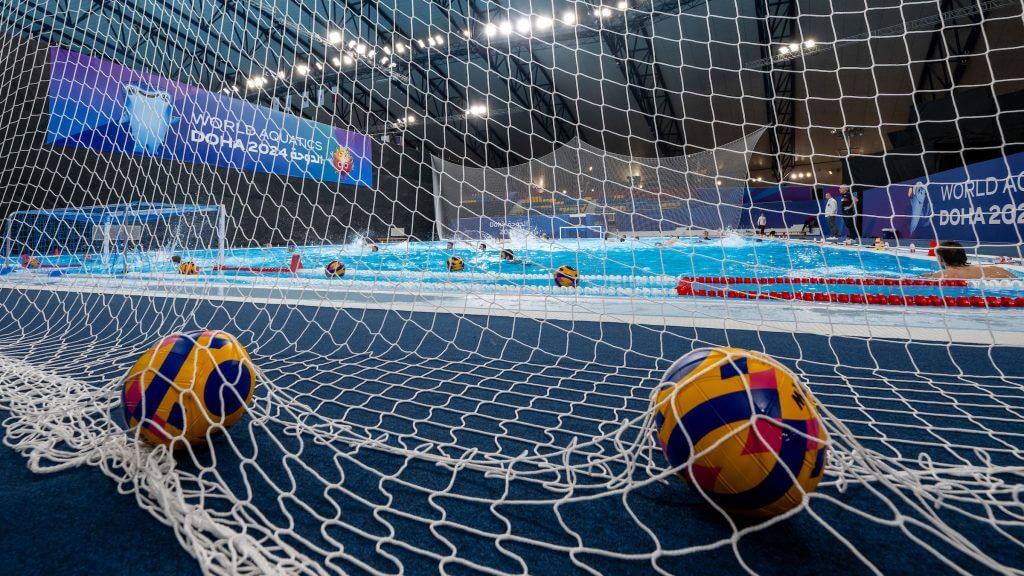
Where Did They Go? The Disappearance of the Elite Water Polo/Swimming Dual-Sport Athlete
By Russ Hafferkamp and Jeff Moulton
In Part I of this article (The Century of the Elite Water Polo/Swimming Dual-Sport Athlete (swimmingworldmagazine.com), we showed that the United States produced an impressive number of athletes in the 20th century who excelled in both water polo and swimming. No other country has come close to producing as many athletes who excelled in both sports.
Since 2000, the United States has not produced a single athlete who was an Olympic swimmer or water polo player and at least a Division I All-American in the other sport. (We consider Brad Schumacher to be a 20th century athlete.) In Part Two of this article, we discuss the factors that have led to the virtual disappearance of athletes who excel in both water polo and swimming.
We asked members of the aquatics community to provide us with their theory about why there has been a significant decline in the number of elite water polo/swimming dual-sport athletes. Some of their comments are interspersed in the following sections.
Theory No. 1 – Single-Sport Specialization
In the 21st century, more and more young athletes are specializing in a single sport. This trend has affected water polo and swimming and helps explain why fewer athletes excel in both sports. Most of our commentators believe that specialization in water polo or swimming at a young age is a major factor in the decline of the dual-sport athlete. Here are the comments from two water polo coaches and former players:
From Matt Swanson, 2x NCAA water polo player of the year at UCLA and water polo coach:
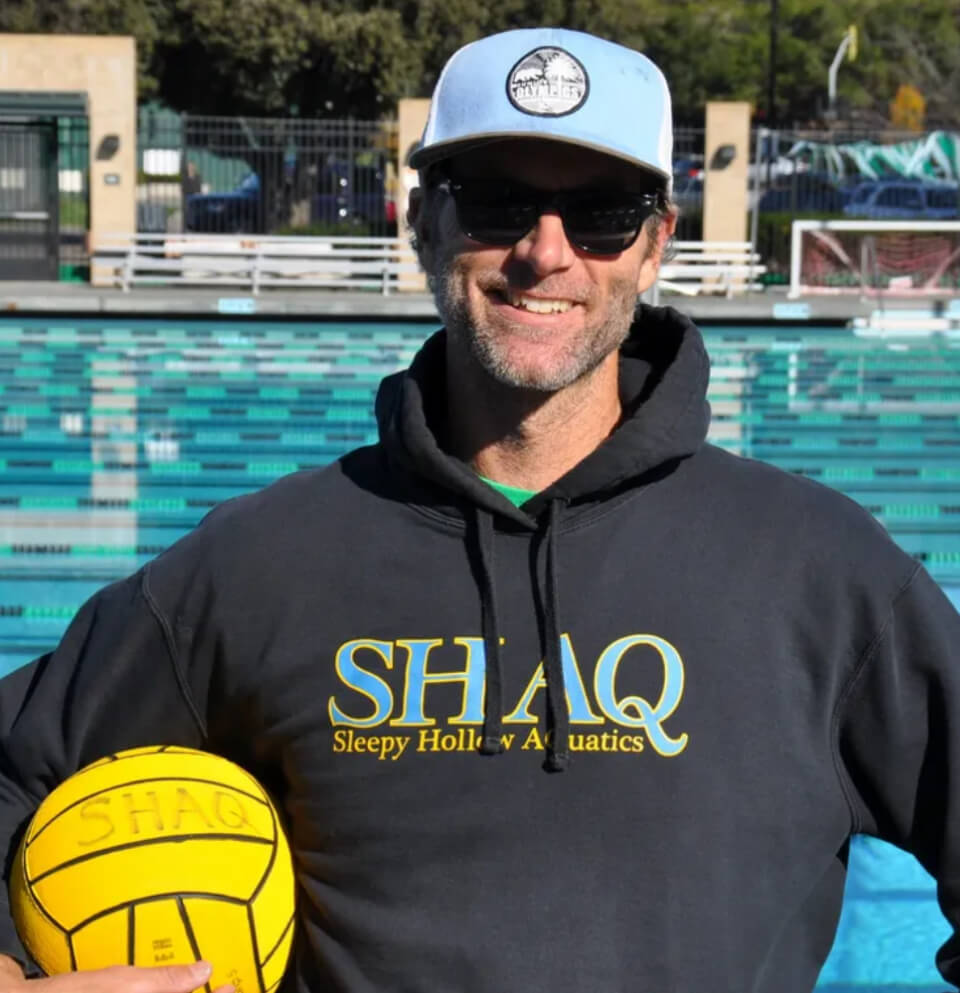
Matt Swanson
“I would say that a specialization in water polo and swimming has driven this. Swim coaches are very reluctant to let their top swimmers play polo anymore. They believe, and probably rightfully so, that polo alters your stroke technique to the point that it is detrimental to getting faster. Water polo is much less counterattack based than it used to be and even the fastest guys in the pool don’t really stick out in the collegiate or international game. . . . Water polo is just such a vertical sport now body-position wise when it used to be more horizontal with counters and driving. . . . I’d be very surprised if you saw a dual-sport swim/polo athlete any time soon. Also, the swim times are insanely fast with today’s swimmers, would be pretty hard to stay at the top of both sports. There are plenty of polo guys going 20-point 50’s and mid-40’s in the 100, but to get to that elite level of swimming takes year-round dedication these days.”
From Jack Bowen, All-American water polo player at Stanford and Menlo School water polo coach:
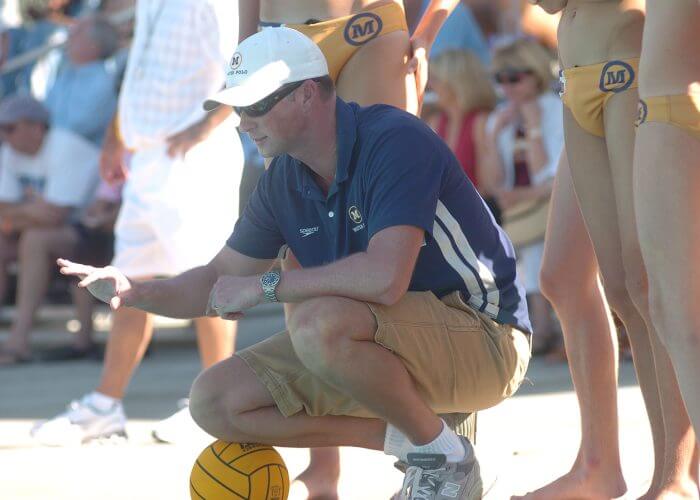
Jack Bowen
“Funny, I was just talking through this with 3 of the swimmers on our Swim Team who are non-water polo players. And I do think one of the issues is specialization: even within swimming it seems as though there’s specialization to the point that they focus on one stroke and/or one distance (short/long, sprint/endurance). But there’s something else going on here, too: I think the counter-attack has been massively improved upon in water polo as has much of the game. But a huge part of earning an advantage is game sense and athleticism. I often reference when I was at Stanford: a group of the top players in the country, all 20-ish years old in the best shape of our lives and we’d occasionally scrimmage the Olympic Club in the offseason: primarily 40-year-old men who weren’t in great water polo shape but who’d played the game for much longer than us. And they’d beat us! Large part due to their awareness and game sense, knowing when to take the first stroke on the counter attack because this is where you get the advantage: If I take the first stroke while guarding Phelps, then I crush him all the way down the pool and maintain that advantage despite his being considerably faster than me.”
Theory No. 2 – Advanced Water Polo Skills
Several of our commentators noted that today’s water polo players have developed skills that are more advanced than the skills players had in the past and that these skills take years to develop.
From Peter Schnugg, member of the Water Polo Hall of Fame and All-American swimmer at Cal:
“I think there are a few reasons (for the decline in the number of elite dual-sport athletes). I’m not sure which came first but the skills of the players today are very different than ours were. While we stressed movement and team play on both ends to create opportunities, the players today have developed their leg strength and shooting/ball handling skills far beyond what any player had in our day. I don’t know if the game changed requiring these new skills or if the development of those skills changed the game. In any event, fast swimming has fallen down the list of skills required of top players. As a result, transitioning great swimmers into polo players is more difficult as it takes a great deal of time to develop the leg strength and ball skills to compete today. What you refer to as specialization is really just the reality that to be a top polo player, you need to develop the necessary skills at an earlier age than in the past. The time it takes to develop those skills makes it more difficult to participate in other sports, including swimming. While I don’t enjoy the game as much today, I have to admit that I’m envious of their skills.”
From a college All-American water polo player and top high school/club team coach:
“The game in the 70s was totally different than the game that is played today. Today, the game is played much more in the vertical than the horizontal. In the 70s and 80s the game was played in the horizontal with driving and movement being a major factor in the success of a team. Players nowadays are much bigger, physical, and have the ability to shoot much better. Leg strength is critical in today’s game whether that is in defense or on the attack. I am not sure when this change occurred but always the most successful players that I faced as a player and now as a coach are the ones who have the best legs and ability to shoot well in the vertical. This skill takes a lot of time to develop and it starts at a young age.”
From a Southern California swim coach:
“In the past, the majority of water polo players were not introduced to the sport until high school. They usually had a good background in swimming and were drawn to the sport due to a coach, friends, etc. Their swimming skills along with being a ‘good’ athlete put them basically on the same level as everyone else. Very few had any exposure to water polo until then, so very few had an advantage. Today, it is very intimidating for a swimmer to try to pick up the sport in high school. Speaking from the girls’ side, I have seen elite swimmers jump into the pool to try to pick up the sport, but quickly quit due to their unfamiliarity with it and frustration in picking it up. I have seen many high school and club teams with superior swimmers and athletes get absolutely trounced by experienced opponents who lacked the same swimming prowess and overall skill level. Yes, coaching is a big part of this, but you have to have players who understand the game and can execute. At the end of the day, there is no substitute for the skills that players develop when they start playing at the 10U level.”
Theory No. 3 – Emergence of Year-Round Youth Water Polo Clubs
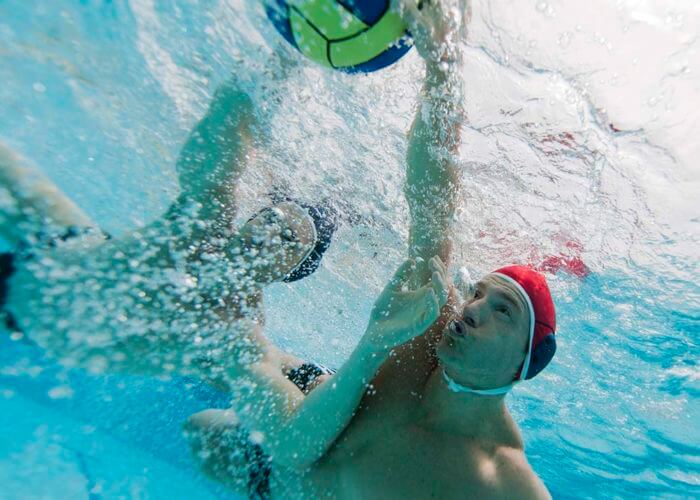 Although year-round swim clubs have been in existence in the United States for a long time, there weren’t many year-round youth water polo clubs before the 1990s. The number of year-round youth water polo clubs has increased significantly in the 21st century. These clubs typically have winter, spring, summer, and fall seasons. Most serious high school water polo players play high school water polo in the fall and participate in the winter, spring, and summer seasons for a local club. Younger kids participate in all four seasons for a local club. Many clubs field competitive teams as young as the 10U age group, and some clubs offer “Splashball” to boys and girls as young as ages 5 and 6.
Although year-round swim clubs have been in existence in the United States for a long time, there weren’t many year-round youth water polo clubs before the 1990s. The number of year-round youth water polo clubs has increased significantly in the 21st century. These clubs typically have winter, spring, summer, and fall seasons. Most serious high school water polo players play high school water polo in the fall and participate in the winter, spring, and summer seasons for a local club. Younger kids participate in all four seasons for a local club. Many clubs field competitive teams as young as the 10U age group, and some clubs offer “Splashball” to boys and girls as young as ages 5 and 6.
The business model for most youth water polo clubs requires the payment of a fee for each season (winter, spring, summer, and fall) the club is in operation. The fees range from several hundred dollars per season to more than $1,000 per season for the most expensive clubs. These fees are in addition to tournament fees and travel expenses. The business model for water polo clubs encourages the clubs to favor specialization in water polo at a young age and year-round water polo.
Several of our commentators discussed the effect year-round water polo has had on water polo and swimming.
From a Northern California swim coach:
“What I have seen is the growth of club water polo, locally, ODP (Olympic Development Program), etc., and the decline in swimming and swimming commitment for the past twenty years, to the point where club water polo players are even discouraged from participating in high school swimming. Yes, in the 80’s and 90’s, you could do both at a high level, now you cannot. The Olympic Trial times twenty years ago are now slower than Junior National times. Everything is more competitive and demands more, if not singular, focus.”
From a 1970s college water polo player and swimmer:
“In our time, most guys swam age group then picked up water polo on the side in junior high. Many of us . . . played other sports (basketball and/or football) in high school before we found water polo. That’s unheard of now. For example, our club program . . . starts kids off with Splashball and Junior Lifeguard training then we get them directly into water polo by the time they’re 9 years old nearly bypassing swimming completely.”
From Breck Weiny, former high school and college water polo coach:
“I believe there are a number of factors at play that influence this shift in American aquatics. . . . The most important factor to me is the rise of year-round competitive club competition for water polo that creates a direct competition with swimming that didn’t exist in the past. Where once water polo was something that was restricted to a high school season for most athletes, which made swimming the default option for staying in shape outside that season, now athletes are encouraged to play water polo exclusively or near exclusively throughout the year. Likewise, swimming has pushed for more specialization and training exclusively in swimming for its athletes as well.
“As a corollary to this, coaching has seen a similar split. Where once the swim coach and water polo coach at an organization were one and the same, this is becoming more rare. On the club level I don’t know if there are any coaches who coach both swimming and water polo, but it must be very few. Even at the high school level, the increased demands on running a program and the ‘professionalization’ of sports has made it difficult to have a high school program (where you are expected to train kids almost year-round) with a single aquatics coach.”
Theory No. 4 – Competition for the Best Athletes and Facilities
Several commentators mentioned the increased competition for the best athletes and facilities.
From Breck Weiny:
“The rise of club water polo has also increased the adversarial relationship between the two sports in my view. Where once swim coaches weren’t threatened by water polo because it was mostly something players did as an off-season activity as a ‘break’ from swimming, now there is added pressure in both sports to ‘capture’ the good athletes sooner and specialize them in a single sport quicker. Similarly, as club water polo has grown the demands by water polo for more pool time–time that was once monopolized by swim programs–has grown in kind. This furthers that adversarial relationship between the sports where they are competing for limited resources (athletes and facilities).
“Some of this is spurred by the overall shift in youth sports in America. The movement away from rec leagues and similar localized competitions and towards pay-to-play regional and national club competitions has created an arms race that parents and coaches gladly take part in. Parents expect early specialization and year-round training in whatever sport they choose regardless of what research suggests is best for athletes.”
From a water polo Olympian:
“I think the secret to the polo success (in Orinda) is the extended water polo family. Large families got involved in polo early on, and have positively influenced younger siblings, and friends of the younger siblings, to play polo. The support infrastructure for such a small area is unusual – a lot of opportunity for fun, but competitive, swimming at a young age via the OMPA pools combined with a healthy and supportive attitude towards water polo. In Illinois, polo lacks that support and/or political power – swimming rules, grabs the best athletes, and dominates pool time.”
Theory No. 5 – Decline in the Number of Elite Coaches who Coach Both Water Polo and Swimming
Before year-round water polo, many elite high school and college water polo coaches also coached swimming. The list of elite coaches who coached both sports during the period from the 1960s through the 1990s is as impressive as the list of athletes who excelled in both sports. For example, the top four college water polo coaches during this time period were also college swim coaches and as many as seven or eight of the top ten high school coaches were also swim coaches. Here is a list showing some of the elite coaches who coached both sports during the last 40 years of the 20th century (some of these individuals continued coaching in the 21st century):
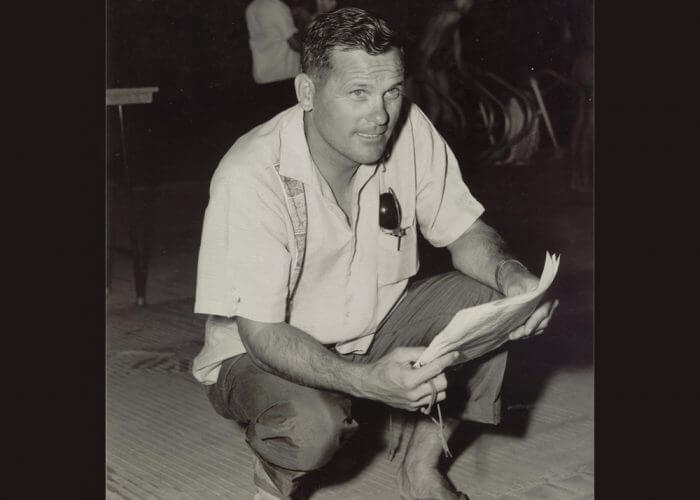 George Haines, generally considered to be the greatest swim coach of the 20th century, swim and water polo coach at Santa Clara High School, swim coach at UCLA and Stanford, 3x Olympic swim coach (1960, 1968, and 1980), inducted into the International Swimming Hall of Fame as a swim coach.
George Haines, generally considered to be the greatest swim coach of the 20th century, swim and water polo coach at Santa Clara High School, swim coach at UCLA and Stanford, 3x Olympic swim coach (1960, 1968, and 1980), inducted into the International Swimming Hall of Fame as a swim coach.
Monte Nitzkowski, water polo and swim coach at Long Beach City College; 3x Olympic water polo coach (1972, 1980, and 1984), winning a bronze medal in 1972 and a silver medal in 1984 (the United States was a co-favorite to win the gold medal in 1980 but President Carter decided to boycott the 1980 Olympics); Water Polo Hall of Fame; 1x Olympian in swimming (1952); inducted into the International Swimming Hall of Fame as a water polo coach.
Pete Cutino, water polo coach at Cal from 1963-1988, 8x NCAA water polo champion, Water Polo Hall of Fame, swim coach at Cal from 1964-1974.
Dante Dettamanti – water polo coach at Occidental, UCSB, and Stanford (1977-2001), 8x NCAA water polo champion at Stanford; Water Polo Hall of Fame; swim coach at Occidental and UCSB.
Bob Horn – water polo coach at UCLA from 1963-1990, 3x NCAA water polo champion, 2x water polo Olympian as a player, inducted into the Water Polo Hall of Fame as a player, swim coach at UCLA from 1963-1974.
Ted Newland – water polo and swim coach at Newport Harbor High School, Corona del Mar High School, and U.C. Irvine; 3x NCAA water polo champion; Water Polo Hall of Fame.
Jim Gaughran – water polo coach at Stanford from 1969-1973, 1x water polo Olympian as a player (1956), inducted into the Water Polo Hall of Fame as a player, swim coach at Stanford from 1960-1979, inducted into the International Swimming Hall of Fame as a swim coach.
John Vargas – water polo and swim coach at Corona del Mar High School, water polo coach at Stanford from 2002-2021, 1x NCAA champion as a player, 2x NCAA water polo champion as a coach, 1x Olympian as a player (1992), 1x Olympian as a coach (2000), inducted into the Water Polo Hall of Fame as a coach.
John Tanner, water polo coach at Pacific from 1985-1996, women’s water polo coach at Stanford from 1998 to the present, 3x NCAA champion as a player, 9x NCAA water polo champion as a coach, Water Polo Hall of Fame, swim coach at Pacific from 1988-1996.
Urho Saari, water polo and swim coach at El Segundo High School, 12x CIF Sothern Section water polo champion, 6x CIF Southern Section swimming champion, 2x Olympic water polo coach (1952 and 1964), coached 18 Olympians, Water Polo Hall of Fame.
 Bill Brown, water polo coach at Miramonte High School from 1967-2004, coached 6 water polo Olympians and 5 members of the Water Polo Hall of Fame, Water Polo Hall of Fame, swimming coach at the Orinda Country Club, owner and operator of the Canyon Swim School in El Sobrante, California, for more than 50 years.
Bill Brown, water polo coach at Miramonte High School from 1967-2004, coached 6 water polo Olympians and 5 members of the Water Polo Hall of Fame, Water Polo Hall of Fame, swimming coach at the Orinda Country Club, owner and operator of the Canyon Swim School in El Sobrante, California, for more than 50 years.
Ron Richison, water polo coach at Campolindo and Acalanes High Schools; assistant coach for Pete Cutino at Cal; Water Polo Hall of Fame; swim coach for the Aqua Bears in Orinda, California, a feeder club for Cal’s swim and water polo programs.
Jim Sprague – water polo and swim coach at Sunny Hills and Servite High Schools, assistant water polo coach at USC, Water Polo Hall of Fame.
Don Stoll – water polo and swim coach at El Toro High School, 7x CIF Southern Section water polo champion, should be in the Water Polo Hall of Fame.
Larry Rogers – water polo and swim coach at Bellarmine College Prep, 25x CIF Central Coast Section water polo champion, 34x Central Coast Section swimming champion, should be in the Water Polo Hall of Fame as a water polo coach and the International Swimming Hall of Fame as a swim coach.
The significant increase in the number of year-round youth water polo clubs has contributed to the decline in the number of individuals who coach both water polo and swimming at high levels and has increased the divide between the two sports. Here is what several of our commentators said about these developments:
From a high school and college water polo coach who coached in the 20th and 21st centuries:
“The decline started, in my opinion, once CIF amended its rules and allowed high school coaches to coach club water polo during the academic year, and coach their own high school athletes. The rule change encouraged more athletes to commit to water polo throughout the year, similar to the commitment levels seen in elite swimmers. This resulted in water polo becoming a year-round sport. The rule change created a situation where some coaches, who previously coached high school water polo and swimming, decided to prioritize coaching water polo year-round.”
From Jim Brumm, water polo and swim coach at Foothill High School for 35 years:
“Definitely the trend of specialization in sports at an early age has led to the trend of not having the elite athlete doing both sports. Another factor is the popularity of year-round water polo clubs. It was around the late 80’s that year-round water polo clubs were forming, these clubs were independent of the swim clubs, so the working relationship with the swim clubs was harder to maintain. The CIF rules in the state also had an influence on how athletes trained and how coaches set up their schedules. In Southern California, coaches were not allowed to coach their athletes outside the season of their sport. This was the no-contact rule. . . . I’m not sure when, but probably in the late 90’s, the non-contact rule was changed so that a High School coach could coach (their athletes) all year long except during a 2 or 3-week dead period. When this rule was changed . . . some High School water polo coaches started running year-round water polo teams and not having their water polo players swim.”
From a former high school and college coach:
“In a search for excellence, we have started to specialize much earlier than before. In today’s game, a 12-year-old already plays year-round water polo, before he would swim and play baseball. . . . Most coaches in the early days coached both swimming and water polo . . . , that created a symbiotic relationship between the athletes, today it is ‘us’ and ‘them’ as far as the coaches.”
Theory No. 6 – NCAA Rules Affecting Water Polo Scholarships
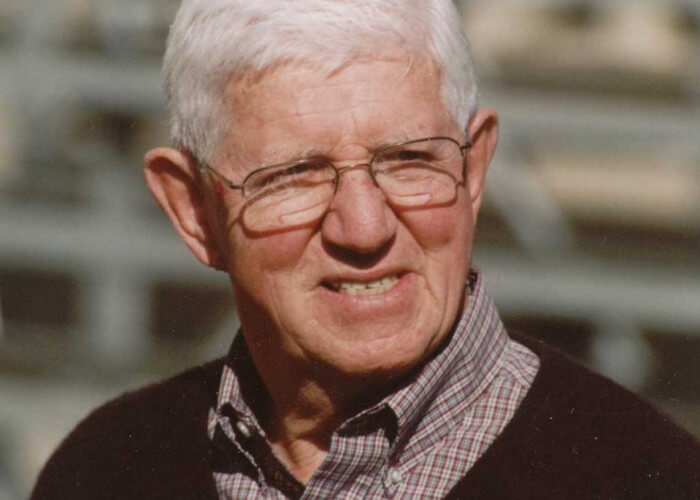
Photo Courtesy: Bill Collins
We look to Dante Dettamanti, Stanford’s Hall-of-Fame water polo coach who died in 2022 in a tragic bike accident, for insight about this theory. Dettamanti believed the so-called “Peter Daland” rule contributed to the decline in the number of athletes who excel in both water polo and swimming:
“In the early days of NCAA water polo, some schools had both swimming and water polo scholarships, and many athletes competed in both sports. Some coaches abused this rule by using water polo scholarships for swimming and swimming scholarships for water polo. For instance, a coach could offer his water polo scholarships to swimmers to get past the limit on the number of swim scholarships. By adding 4 water polo scholarships to the swim team, he could have 4 more swimmers on scholarship. The swimmer would make a token appearance on the water polo team (they put his name on the roster) and it would be perfectly legal. This led to the ‘Peter Daland’ rule. He was the swim coach at USC from 1959 through 1992 who got tired of competing against swimmers from other schools who were on a water polo scholarship. He convinced the NCAA to pass a rule providing that, if a swimmer received a water polo scholarship and also swam on the swim team, then that scholarship would count against the number of scholarships allotted to the swim team. This stopped the ‘double dipping’ as it was called then.
“I really believe that the ‘Peter Daland’ rule did more to keep water polo players from swimming than any other single event. Until then a lot of guys did both. You had to do both in order to keep your scholarship. As soon as water polo scholarships started counting against the swim team, most guys only played water polo. Once in a while we had swimmers on scholarship who would play water polo (if their coaches let them) like Pablo Morales, because a swimmer on scholarship did not count against water polo. Some schools in fact awarded swim scholarships to water polo players to build up their water polo team because water polo was allowed only 4.5 scholarships while swimming was allowed more.”
The Brunswick School Model – Confronting Specialization
In recent years, Brunswick School, a private school in Greenwich, Connecticut, has had the best high school water polo program outside of California. Brunswick also has one of the top swimming programs in New England. Here is what two Brunswick coaches said about specializing in swimming or water polo at an early age:
From Evan Ciecimirski, Brunswick School Associate Head Coach for Water Polo and Assistant Coach for Swimming:
“So, does early specialization truly offer substantial advantages for athletes? On a larger scale, I believe the answer is no. Personally, I owe much of my success in water polo to my background in swimming. For example, skills acquired in swimming such as winning swim-offs for extra possessions mirror the strategic advantages sought by lacrosse teams through skilled face-off players. Essentially, my proficiency in water polo is intricately linked to my swimming experience, and vice versa. Even now, as a masters water polo player, this dual expertise gives me a competitive edge over younger athletes who may not be as well-rounded.
“While some argue that specializing in water polo can adversely affect swimming strokes and overall athletic development, it is crucial to weigh this against the dedication and focus required for single-sport specialization. I began competitive swimming at age five, but engaging in other sports during the year prevented burnout and sustained my interest in swimming. This balance also made the sport more engaging and enjoyable. Particularly for swimmers, who spend an inordinate amount of time or a full year staring at the black line at the bottom of the pool, there is a real benefit to having that break for mental rejuvenation and to physically improve their lateral and vertical strength.
“For those specializing in water polo, incorporating a few months of swimming can yield significant benefits both mentally and physically. This is a point that has not been emphasized enough. Coaches, especially at the high school level where athletes are still developing, should recognize the value of diversifying sports. Despite apparent similarities, water polo and swimming offer distinct experiences. Water polo fosters teamwork and social skills, while swimming cultivates individual discipline and self-improvement. In water polo, effort can sometimes mask weaknesses, but swimming against the clock leaves no room for disguise.
“Ultimately, a balanced approach to sports specialization, combining diverse experiences and skill sets, not only minimizes the risk of injuries but also enhances overall athletic development and performance across different disciplines. Recognizing the unique benefits each sport offers can lead to more well-rounded and resilient athletes in the long run.”
From Aaron Montgomery, Brunswick School swim coach:
“I fear if we specialize too much, the swimming world may miss out on some incredible talent. I don’t know if the converse is true.
“I have been coaching swimming for 29 years. I have been coaching water polo players who swim for the past ten. I believe that it is much easier to transition an elite water polo player into a strong swimmer than the other way around. I have had the pleasure of coaching some amazing athletic and competitive water polo players who have evolved into very strong, if not elite, swimmers. The excitement, competitiveness, and athleticism they brought to the pool every day were paired with the challenge of how to utilize their tremendous strength and incredible feel for the water into fast swimming.
“We have had some boys quit swimming over the past few years to focus on full-time water polo. Several have gone on to college water polo programs. I don’t know enough about water polo to say if they would have been better off swimming another year or two. However, we are fighting against too much specialization and encourage year-round water polo players to train with us six times a week. Some supplement with evening and weekend water polo, but the majority have bought in to swimming from November to March.
“For the boys that stay on the swim team for four years, I am lucky. One of the recruiting metrics for WP players that they care about is their 100FR time, and I have spent the past ten years trying to help boys achieve their goals in the 100FR while also trying to get a second or third event out of them for the swim team. . . . Many of our graduates could swim in college and be competitive. Brunswick holds the New England Division I record in the 200FR Relay (1:22.48) with two water polo players on it. While many of them could swim in college, they just love water polo too much to pursue swimming.
“Our swim team currently has members of the USA Water Polo National Junior Team, Cadet Team, and National Select Team. I’d like to think the speed and stamina swimming has helped them develop and has had some impact on their water polo success.”
Conclusion
The statistics are clear: There has been a sharp decline in the number of American athletes who excel in both water polo and swimming and a similar decline in the number of elite coaches who coach both sports. We believe these developments are attributable to many of the theories discussed by our commentators and to social pressures that cause some parents and coaches to favor single-sport specialization for athletes without fully considering whether specialization at a young age is appropriate for the athletes. This trend in aquatics is likely to continue in the United States and other countries and, regrettably, these developments will further increase the divide between water polo and swimming.




Very interesting article, guys, thank you. I share the same sentiment reflected in much of the article. I am curious to what degree money played a part.
Although the article touched on scholarship money, I was left wondering about the impact finances, or lack thereof, may have had on the trend.
I’m talking about funding from athletic departments and whether disproportionate support for one sport had a negative impact on the other in secondary and post-secondary schools. Also, did Title IX factor in or have any impact on the changes reflected , including specialization?
My little brother was a dual sport Olympic silver medalist and had extensive club and college swim coaching experience. He was supportive of both sports to the extent he was able. His rather extreme level of frustration at the behind the scenes politics has always been a curiosity to me, but, thus far, he declines to share his experiences in any detail. Did your findings reflect that funding sources had little to no effect on the trends?
Thank you again for such a thoughtful and insightful article.
Greetings steve …hope you are well !
Great article by many qualified coaches and athletes!!
I was one of the guys Russ mentions on the Elite dual sport athlete . A real fast twitch guy who started in Water Polo for two years and ended going to the Olympics in swimming and All American on both sports!
the reasons are various but water polo players can be great sprinters and terrific relay team members!
I was lucky because I was exposed to working on my legs and fundamental ball handling first. It is easier to become a great swimmer if you start out in water polo. Not so easy to be a good water polo player if you started out as a swimmer
one of factors is that swimming practice is BORING but doing it for 3 months is easy! When I started coaching HS water polo , I required my players to swim in the swimming season AND go to water polo Practice two nights a week just to scrimmage for two hours…
the results were great…important detail , less people quit swimming if they could play polo 3/4 of the year!
Great article
Our club in Ottawa, Canada still believes in the benefits of being a dual-sport athlete. Water polo is a tough sport and takes years to master, why not have some fun along the way and go to some swim meets? WAVE athletes have to compete in both swimming and water polo and the kids are reaping the benefits.